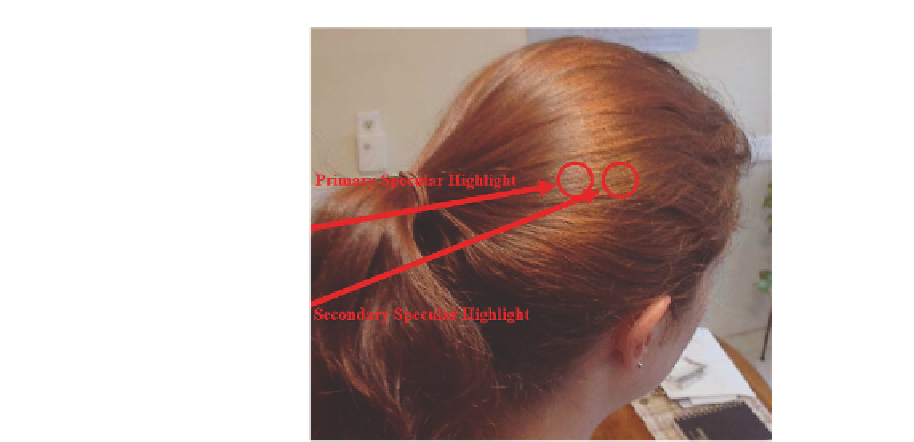Graphics Reference
In-Depth Information
Figure 5.3.
An image, found in and courtesy of [Scheuermann 04], which shows the
dual specular highlights in hair that the resulting practical real-time hair lighting model
attempts to produce.
Marschner's paper [Marschner et al. 03] describes a primary and secondary high-
light. The primary highlight is shifted toward the hair tip, and is primarily
influenced by the light color. The secondary highlight is shifted toward the hair
root, and is influenced by the light color and hair color. To combine the two spec-
ular highlights, the reflection vector for the primary highlight is shifted in toward
the direction of the hair tangent, pointing from root to tip, and the secondary
highlight may be shifted in the opposite way, away from the direction of the hair
fiber tangent (see Figure 5.4).
5.4 Shadows and Approximated Hair Self-Shadowing
In addition to lighting calculations, the hair receives environment shadows and
self-shadowing. In this section, we explain what we used to handle hair receiving
and casting shadows as well as hair self-shadowing in
Tomb Raider
.
We chose to approximate the self-shadowing calculation because of the com-
parative cost of generating and applying a deep shadow map in order to apply
accurate self-shadowing effects [Lacroix 13,Engel and Hodes 13]. For the approx-
imation, a regular shadow map may be used, which will hold the depth of the
hair fibers closest to the light source. This shadow map of the hair serves as a
representation of the topmost layer of the hair. Using this shadow map, an ap-
proximated
number of fibers
occluding the hair fragment can be calculated and









